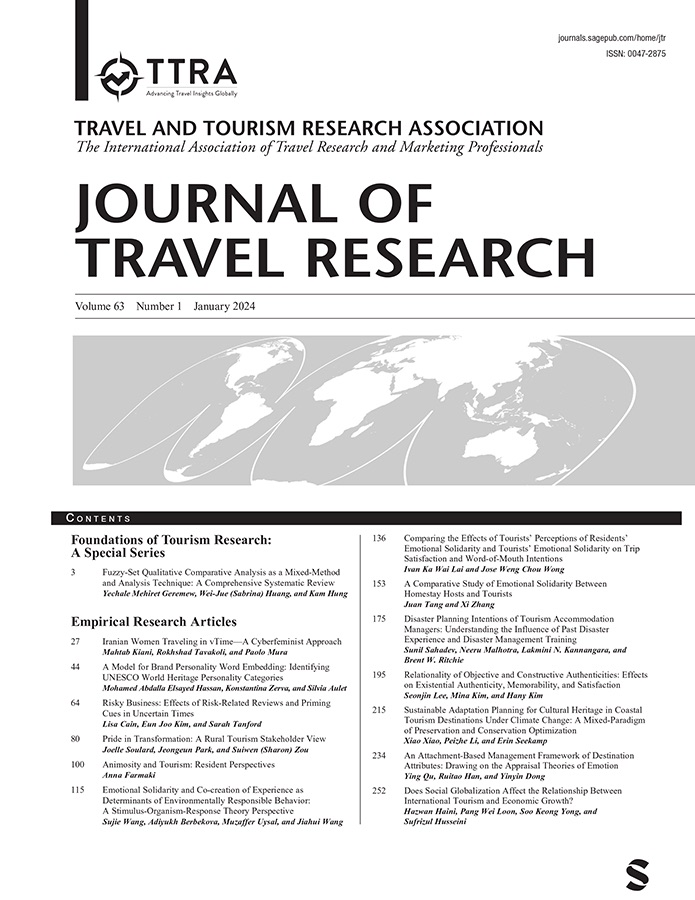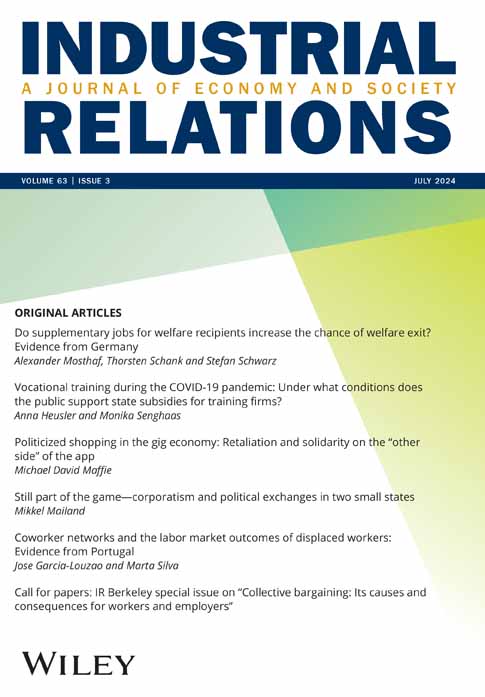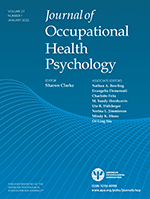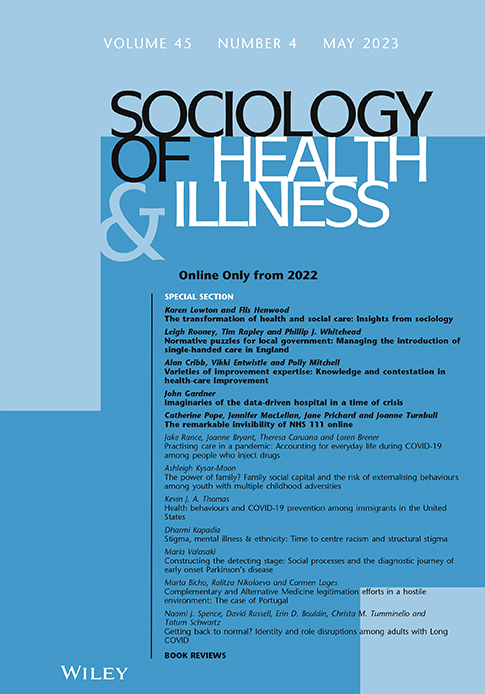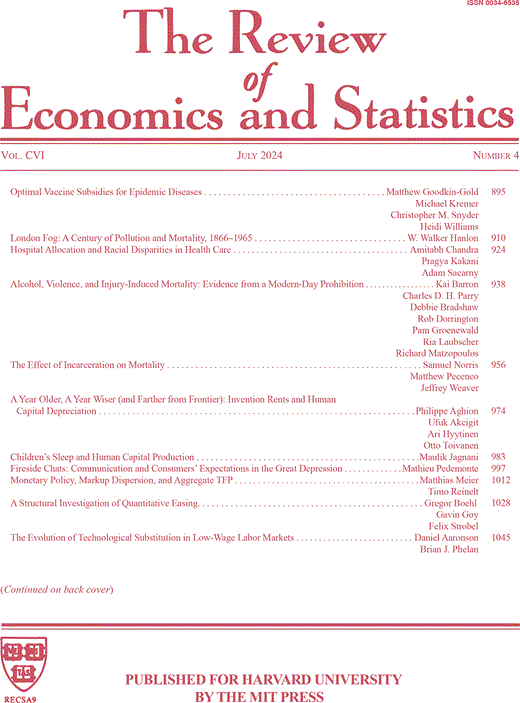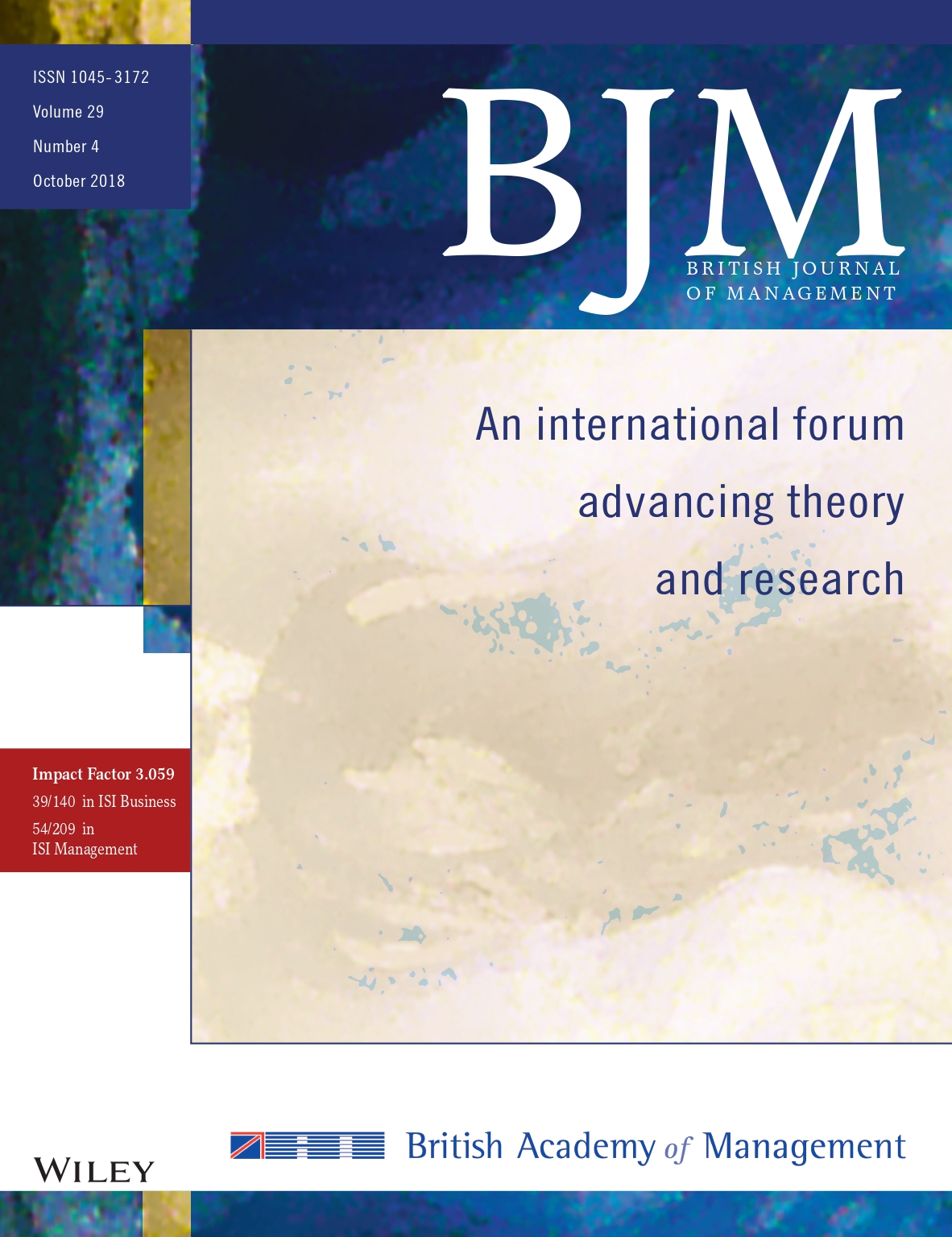This article focuses on how tourists connect to tourism-related brands through virtual reality (VR). The researchers identified this as being a type of experience that grew significantly but remained understudied. In the article, the researchers explore tourists’ identification with brands offering VR experiences, and the way this connection fosters a desire to co-create with these brands and maintain loyalty to them. The study confirms this assumption and shows that tourists who are more comfortable with technology are more likely to want to create things with and be loyal to brands with VR experiences. Overall, this research offers valuable insights for both tourism literature and tourism businesses.
In this article, the researchers explored the concept of quality of life (QoL). This is an issue of increasing importance due to various global changes driven by human population density, growth, crises, and pandemics. As more people choose to live in urban areas, the need for accurate assessments of city quality of life becomes essential to ensure practical measures that benefit the well-being of both present and future generations. Evaluating QoL, however, poses significant challenges due to its subjective and complex nature. To address these challenges, the researchers developed a multicriteria model to assist decision-makers in evaluating urban QoL. The model uses three methods. First, it applies cognitive mapping to represent how the experts understand a situation by visualising how different factors are connected. Second, the model uses a neutrosophic logic to assign a number to the expert’s opinions about the certainty of each factor. This is a type of flexible assessment that considers uncertainty, unlike traditional logic that deals with “true” or “false”. Lastly, the DEMATEL technique is applied by combining the uncertain values into a single value for each factor, allowing them to by prioritized. Overall, the model provides a comprehensive and practical way for decision makers to evaluate and improve the quality of life in urban areas. The article concludes with a discussion on the practical implications, advantages, and limitations of this proposed model.
In this article, the researchers explored the concept of quality of life (QoL). This is an issue of increasing importance due to various global changes driven by human population density, growth, crises, and pandemics. As more people choose to live in urban areas, the need for accurate assessments of city quality of life becomes essential to ensure practical measures that benefit the well-being of both present and future generations. Evaluating QoL, however, poses significant challenges due to its subjective and complex nature. To address these challenges, the researchers developed a multicriteria model to assist decision-makers in evaluating urban QoL. The model uses three methods. First, it applies cognitive mapping to represent how the experts understand a situation by visualising how different factors are connected. Second, the model uses a neutrosophic logic to assign a number to the expert’s opinions about the certainty of each factor. This is a type of flexible assessment that considers uncertainty, unlike traditional logic that deals with “true” or “false”. Lastly, the DEMATEL technique is applied by combining the uncertain values into a single value for each factor, allowing them to by prioritized. Overall, the model provides a comprehensive and practical way for decision makers to evaluate and improve the quality of life in urban areas. The article concludes with a discussion on the practical implications, advantages, and limitations of this proposed model.
This article examines the impact of monetary policy on exchange rates (the rate at which one currency can be exchanged for another), highlighting how temporary and permanent changes in monetary policy affect exchange rates differently. Using monthly data from several advanced economies between 1971 and 2019, the authors find that a temporary increase in U.S. nominal interest rates (the percentage an individual pays or earns on a loan or deposit, without accounting for inflation) temporarily strengthens the U.S. dollar against other currencies, whereas a permanent rise in nominal interest rates weakens the U.S. dollar, potentially contributing to higher inflation.
This article explores the impact of social networks within the labour market on hiring and re-employment. The researchers investigated how leveraging social connections can help people in finding new jobs following a company closure, using data from Portugal. They found that individuals with a former co-worker at the new company were three times more likely to be hired compared to those without such connections. In addition, those who obtained jobs through these networks enjoyed better starting salaries and felt more secure in their new roles.
In this article, the researchers explored the concept of leader-member exchange (LMX), that is, the quality of the relationship between leaders and followers. They looked at how the quality of such relationships affects the way employees feel daily. The researchers believed good LMX relationships would make employees happier, but they also knew these relationships could change from day to day. To understand this better, they followed employees from various organisations for five workdays. Each morning and evening, the employees answered questions about their LMX and well-being. The study found that the quality of the LMX relationship varied throughout the week. Good LMX on a particular day meant the employees felt better that same day. They found that if employees interacted with their leader, having positive social interactions with them, such as based on trust, this mattered for their well-being as opposed to having interactions that are based on formal roles. Finally, the study showed that feeling engaged at work was the reason why good LMX relationship and positive social interactions boosted employee well-being. This research shows that the way leaders behave can significantly impact how employees feel each day.
In this article, the researchers explored the concept of leader-member exchange (LMX), that is, the quality of the relationship between leaders and followers. They looked at how the quality of such relationships affects the way employees feel daily. The researchers believed good LMX relationships would make employees happier, but they also knew these relationships could change from day to day. To understand this better, they followed employees from various organisations for five workdays. Each morning and evening, the employees answered questions about their LMX and well-being. The study found that the quality of the LMX relationship varied throughout the week. Good LMX on a particular day meant the employees felt better that same day. They found that if employees interacted with their leader, having positive social interactions with them, such as based on trust, this mattered for their well-being as opposed to having interactions that are based on formal roles. Finally, the study showed that feeling engaged at work was the reason why good LMX relationship and positive social interactions boosted employee well-being. This research shows that the way leaders behave can significantly impact how employees feel each day.
The article focuses on organisations offering complementary and alternative medicine (CAM), which are health practices that fall outside of mainstream healthcare such as acupuncture, homoeopathy, or osteopathy. These organisations face social resistance for instance, because procedures are not widely agreed upon and results are questioned. In that sense, such organisations are considered hybrid, because they do not follow a strict market logic (making profit), but they also need to have their healthcare identity validated. With that prompt, the researchers in this study looked at how CAM organizations try to gain acceptance and credibility. The study focused on Portugal, where legalizing CAM therapies has been a long battle. By interviewing CAM managers, the researchers outlined different strategies used to achieve the desired legitimacy, proposing a model that explains the path to broader societal recognition. The study found that CAM organisations gain practical acceptance from users who benefit directly from the services by engaging in trust building and consumer education and CAM advocacy practices. They use this initial acceptance to solidify their purpose and build a foundation of ethical credibility. The organisations leverage market success to boost ethical credibility and are able to develop other aspects like better procedures and protocols, involve skilled employees, and supportive stakeholders as well as better financial sustainability. From this, they create a feedback loop between ethical and practical acceptance and invest in marketing to expand the customer base and achieve broad societal credibility.
The article focuses on the way the Federal Open Market Committee (FOMC) operates. The FOMC is a part of the Federal Reserve System (the Fed), the central bank of the United States, responsible for setting its monetary policy. The study looked at how structural macroeconomic shocks – significant, unexpected events that fundamentally alter an economy, such as technological breakthroughs or major policy changes – affects decision-making, and particularly disagreements, among this committee. The researchers found that disagreements are less likely to occur when “demand shocks” are the main cause of inflation (general change in prices); that is, when an increase in inflation is accompanied by an increase in economic output (production). The opposite is true: disagreements are more likely to occur when “supply shocks” are the main cause of inflation; that is, when an increase in inflation is accompanied by an decrease in economic output. These results indicate that supply shocks make it harder for economic agents outside the Fed to predict what interest rates will be in the future – because supply shocks force the Fed to choose between controlling inflation or economic growth, while demand shocks do not. Overall, the findings suggest disagreements happen because FOMC members have different priorities when it comes to the Fed’s goals of stable prices and economic growth.
The article focuses on the way the Federal Open Market Committee (FOMC) operates. The FOMC is a part of the Federal Reserve System (the Fed), the central bank of the United States, responsible for setting its monetary policy. The study looked at how structural macroeconomic shocks – significant, unexpected events that fundamentally alter an economy, such as technological breakthroughs or major policy changes – affects decision-making, and particularly disagreements, among this committee. The researchers found that disagreements are less likely to occur when “demand shocks” are the main cause of inflation (general change in prices); that is, when an increase in inflation is accompanied by an increase in economic output (production). The opposite is true: disagreements are more likely to occur when “supply shocks” are the main cause of inflation; that is, when an increase in inflation is accompanied by an decrease in economic output. These results indicate that supply shocks make it harder for economic agents outside the Fed to predict what interest rates will be in the future – because supply shocks force the Fed to choose between controlling inflation or economic growth, while demand shocks do not. Overall, the findings suggest disagreements happen because FOMC members have different priorities when it comes to the Fed’s goals of stable prices and economic growth.
Shifting away from the usual focus on individual leaders and their core teams in entrepreneurship research, this article looks at companies as organisations with employees – emphasising the importance of employees, especially in building strong external relationships for the company. To understand how start-up companies become more innovative, researchers examined three factors: the external relationships of the start-up, how entrepreneurs and employees network to initiate and maintain these relationships, and the different levels of hierarchy involved in this process. The researchers conducted a survey-based study involving 96 entrepreneurs and 228 employees from start-ups. Results show that external relationships are most beneficial for entrepreneurial innovation when employees actively engage in networking practices. Interestingly, the collective effort of employees plays a significant role compared to the efforts of individual entrepreneurs. This highlights the crucial role of employees in leveraging external relationships for innovation in start-up companies.
Shifting away from the usual focus on individual leaders and their core teams in entrepreneurship research, this article looks at companies as organisations with employees – emphasising the importance of employees, especially in building strong external relationships for the company. To understand how start-up companies become more innovative, researchers examined three factors: the external relationships of the start-up, how entrepreneurs and employees network to initiate and maintain these relationships, and the different levels of hierarchy involved in this process. The researchers conducted a survey-based study involving 96 entrepreneurs and 228 employees from start-ups. Results show that external relationships are most beneficial for entrepreneurial innovation when employees actively engage in networking practices. Interestingly, the collective effort of employees plays a significant role compared to the efforts of individual entrepreneurs. This highlights the crucial role of employees in leveraging external relationships for innovation in start-up companies.
In this article, researchers introduce a new way to solve complex math problems. These problems involve calculating certain functions that are extensively used by engineers, statisticians, and mathematicians when studying and managing the operations research of many industrial activities concerned with the design, analysis, production planning and control, and service systems. They found that their new method is both fast and accurate, which means it could be helpful in many practical situations. For example, it could be used in industries like operations management, industrial engineering, and financial engineering to solve important problems more efficiently.
In this article, researchers introduce a new way to solve complex math problems. These problems involve calculating certain functions that are extensively used by engineers, statisticians, and mathematicians when studying and managing the operations research of many industrial activities concerned with the design, analysis, production planning and control, and service systems. They found that their new method is both fast and accurate, which means it could be helpful in many practical situations. For example, it could be used in industries like operations management, industrial engineering, and financial engineering to solve important problems more efficiently.
